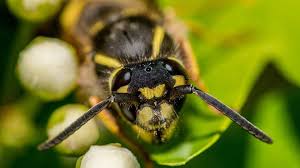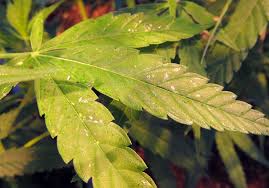Introduction
Keeping your cannabis crop healthy and thriving requires vigilance against unwelcome guests: pests. These tiny critters can wreak havoc on your plants, damaging leaves, sucking vital nutrients, and even transmitting diseases. But fear not, cannabis cultivators! This comprehensive guide equips you with the knowledge to identify common cannabis pests and implement effective control measures to keep your green beauties bug-free.
Gearing Up for Battle: Essential Tools and Techniques
Before diving into specific pests, let’s equip you with the tools and techniques needed to wage war on these unwanted visitors:
- Magnifying Glass: This simple tool allows you to get a closer look at potential pests and accurately identify them.
- Neem Oil Spray: A natural and readily available option, neem oil spray effectively targets a variety of soft-bodied insects.
- Insecticidal Soap Spray: Another organic option, insecticidal soap spray kills pests on contact but is gentle on plants.
- Yellow Sticky Traps: These attract and trap flying pests, providing an early warning system and reducing their population.
- Diatomaceous Earth (DE): This natural powder dehydrates and kills insects with exoskeletons.
- Ladybugs and Lacewings: These beneficial insects are natural predators of many common cannabis pests.
Remember: Always test any product on a small area of your plant first to check for phytotoxicity (plant poisoning) before applying it to the entire crop.
Identify Common Cannabis Pests

Now, let’s meet the most common culprits and learn how to send them packing:
1. Aphids: These tiny, sap-sucking insects come in various colors (green, yellow, black) and congregate on the undersides of leaves. Signs of an aphid infestation include curled leaves, stunted growth, and sticky honeydew secretions.
- Control: Treat with neem oil spray, insecticidal soap spray, or ladybugs (natural predators).
2. Spider Mites: Even smaller than aphids, spider mites are barely visible to the naked eye. They create fine webbing on the undersides of leaves and cause stippling (yellowish or brownish spots).
- Control: Increase humidity levels around your plants (mites dislike moisture) and use insecticidal soap spray or predatory mites.
3. Thrips: These slender, winged insects feed on plant sap, leaving silvery spots on leaves and causing distorted growth.
- Control: Use neem oil spray, insecticidal soap spray, or apply beneficial predatory mites or pirate bugs.
4. Whiteflies: These tiny, white, flying insects resemble miniature moths. They leave a sticky honeydew residue and weaken plants by sucking sap.
- Control: Yellow sticky traps effectively capture adults, while neem oil spray and insecticidal soap can target nymphs (immature whiteflies).
5. Fungus Gnats: These small, dark flies primarily target the root system, laying eggs in moist soil. Their larvae feed on decaying organic matter and can damage young roots.
- Control: Allow the top inch of soil to dry completely between waterings and consider using mosquito dunks in your watering can to kill larvae.
6. Broad Mites: Microscopic in size, broad mites cause distorted, stunted growth and bronzed or reddish discoloration of leaves.
- Control: Maintain proper humidity levels and use insecticidal soap sprays specifically labeled for broad mites.
7. Caterpillars: These chewing insects come in various shapes and sizes and can cause significant damage by eating leaves. They may also leave droppings on your plants.
- Control: Handpick caterpillars and their eggs whenever possible. Alternatively, use neem oil spray or Bacillus thuringiensis (Bt) spray, a biological insecticide that targets caterpillars.
8. Leafminers: The larvae of various flies or moths, leafminers tunnel through leaves, creating visible white or brown trails.
- Control: Minimize leafminer damage by introducing parasitic wasps that attack their eggs. For existing infestations, neem oil spray or insecticidal soap might offer some control.
9. Slugs and Snails: These slimy creatures leave behind a silvery trail of mucus and chew large holes in leaves.
- Control: Handpick and remove them from your plants. Create a barrier around your garden using crushed eggshells, diatomaceous earth, or copper tape to deter them.
10. Rodents: While not technically insects, rodents like rabbits, mice, and squirrels can cause significant damage by chewing on stems, leaves, and fruit.
- Control: Exclusion with fencing or netting is the best defense. Additionally, consider using humane traps if rodent activity persists.
Prevention is Key

The best defense against pests is a healthy and thriving cannabis garden. Here are some proactive measures you can take to create a less hospitable environment for unwanted visitors:
- Promote good air circulation: Stagnant air allows moisture to build up, creating ideal conditions for fungal diseases and some pests. Ensure proper ventilation in your grow space, whether indoors or outdoors.
- Maintain proper humidity levels: High humidity levels can encourage fungal growth and some pests like spider mites. Aim for a relative humidity range of 40-60% depending on the growth stage of your plants.
- Start with clean plants and healthy soil: Purchasing pest-free clones or seeds and using sterilized potting mix reduces the risk of introducing pests or diseases into your garden.
- Practice good sanitation: Clean your tools and equipment regularly with a disinfectant solution to prevent the spread of potential pathogens or pests.
- Inspect your plants regularly: Early detection is crucial! Regularly scan your plants for signs of pest damage, such as discoloration, webbing, or unusual insect activity.
- Consider companion planting: Planting certain herbs and flowers alongside your cannabis can deter pests. For example, lavender repels some flying insects, while marigolds can discourage nematodes in the soil.
- Choose pest-resistant cannabis strains: Some cannabis strains are naturally more resistant to pests than others. Research and choose strains that are known for their resilience.
Read This- The Ultimate Guide to Choosing the Best Soil for CBD Seed Growth
Taking Care After Pest Control
Once you’ve identified and controlled a pest infestation, here are some additional steps to promote recovery and prevent future outbreaks:
- Monitor your plants closely: Continue to inspect your plants regularly to ensure the pest problem is truly eliminated.
- Remove dead leaves and debris: This eliminates potential hiding spots for pests and reduces the risk of disease.
- Strengthen your plants: Consider using organic fertilizers or plant stimulants to help your plants recover from pest damage and boost their overall health.
Conclusion
By understanding common cannabis pests, implementing effective control measures, and prioritizing preventative practices, you can create a thriving cannabis garden. Remember, vigilance is key! Regularly inspect your plants, maintain a healthy growing environment, and act swiftly if you notice any signs of trouble. With dedication and these simple strategies, you can keep those pesky pests at bay and ensure a bountiful harvest of your favorite cannabis!
